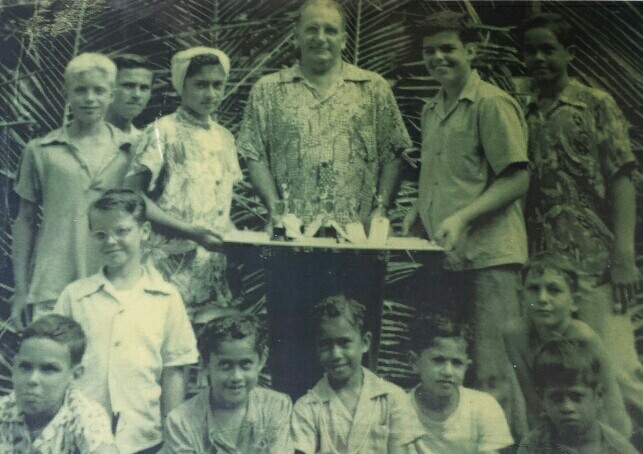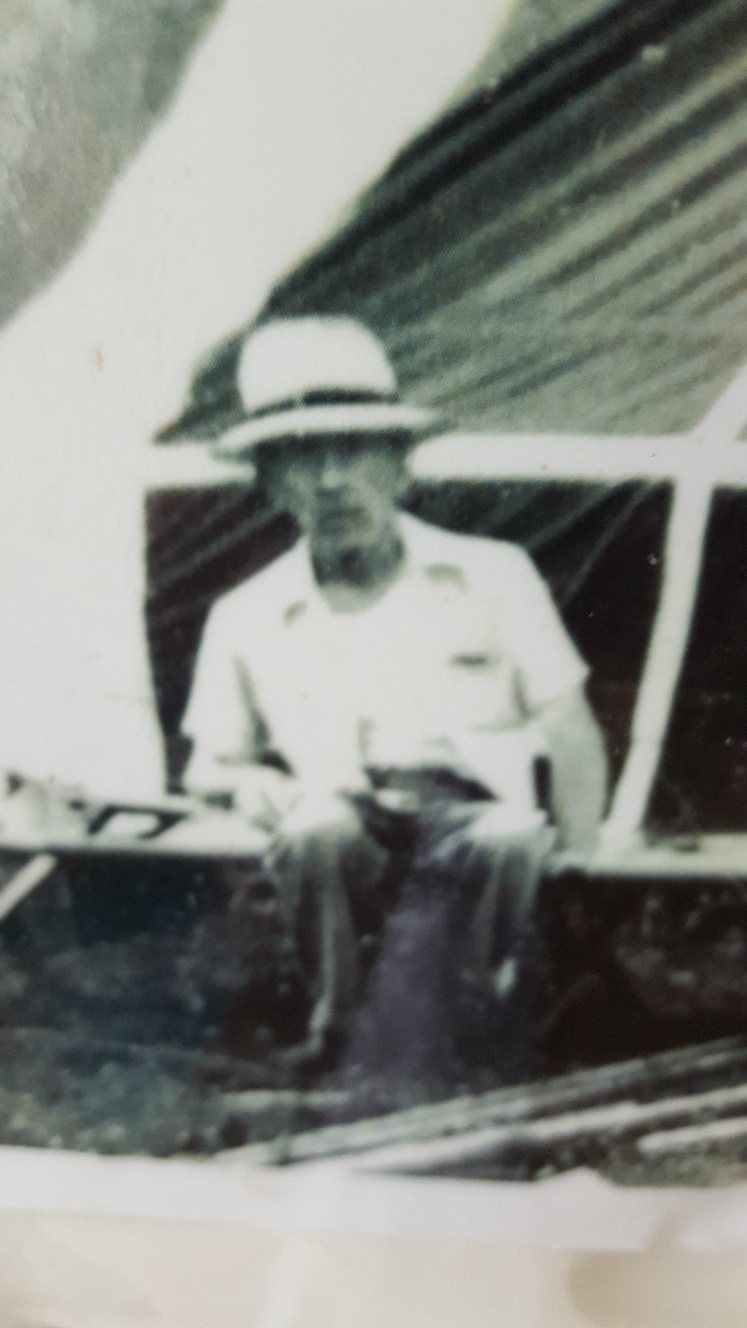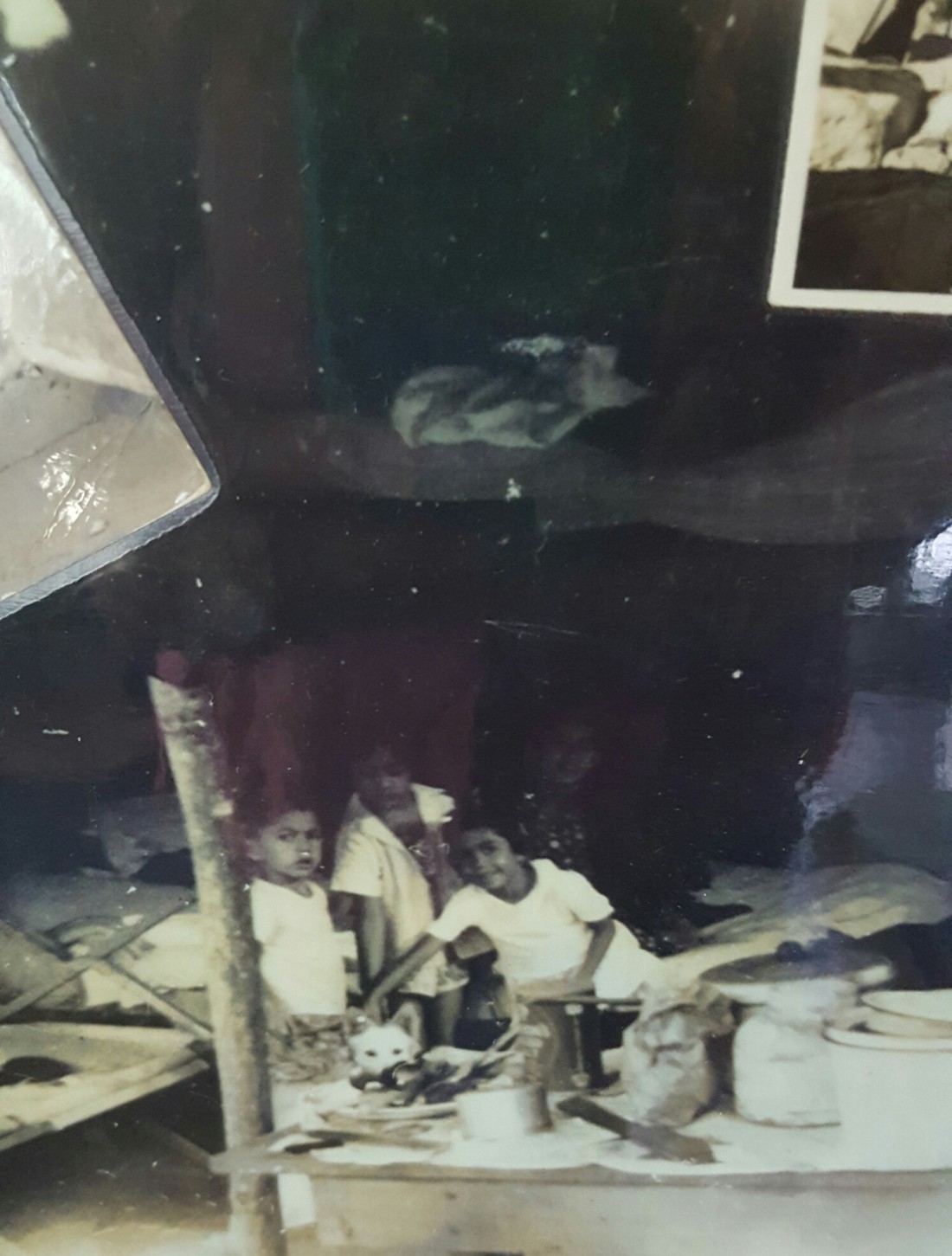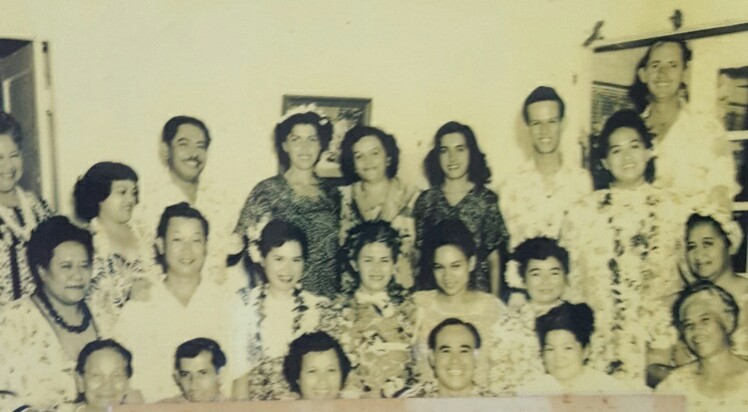My sister Dannette and I attended Kamehameha Schools, McNeil Campus off Dillingham Boulevard to start our education. We rode with our Dad from Kahana Valley to Honolulu, on his big Military Weapons Carrier through the Nu’uanu Pali Highway and back to Kahana Valley every day the same route. Many times it was cold and windy, but we had lots of blankets to keep us warm, lots of military blankets, bought at the Surplus Store on base at Pearl Harbor where Dad worked at Shop 08. It was in the year of 1943/1944 because she was 5 and I was 4 years old. Sometimes Dad was late to pick us kids up so we were late getting to Kahana Bay….
We lived across the beach area, right in the middle of the Bay. My sister Dannette was in the first Grade when I started in Kindergarten at 4 years old since school started in September and my birthday was in November, so I was still a baby, a real cry baby at that. As soon as she went to her class, I screamed so loud and not gracious at all till she had to leave her class to “malama” me. I was my sister’s shadow, followed her all over, and got to know all her friends.
Eventually, our Mama got really tired of us coming home so late getting up so early so she pulled us out of Kamehameha School and enrolled us in Ka’a’awa Elementary School, close to home. Sista, Dannette was in 4th Grade by then, and I was a Third Grader, so we had been trekking to Kamehameha School for a good four years or so….Ka’a’awa was great, it was close to Kahana Bay, close to the kahakai/beaches and close to our Mama too. And, yes our friends too because we had to walk to school from Kahana and we had to walk home from school from Ka’a’awa. There were no school buses, there was no such thing as 7 Eleven Store, only Anzai Store across Swanzy Park and Bonnie’s Store across Ka’a’awa Park. We had a treat once in a “blue moon” but mostly we learned real early how to husk a coconut for the coconut water to quench our thirst and how to pound kamani for its crunchy nuts. We learned early to be survivors.
Dad and Mom were very active in the P.T.A. and also the 4-H club with Edith Anzai as the leader. Sister Dannette and I had to join because we were farmers and we were taught how to raise and care for animals. We also entered the Hawai’I Farm Fair when we had a nice pig or cow to enter and took home many Blue Ribbons. We also learned how to scramble the best eggs, Japanese style, really “da best,” so light and fluffy, because Edith used the fork to beat the eggs in the frying pan as it cooked on medium heat, I’m sharing that because eggs never come out right if you use high fire and rush…I think she talked to her eggs because they were perfect and delicious!!!!
Our Dad really got involved with the community and the parents, joined the Lions Club and even the Hawaiian Civic Club, never knew that till I found his Certificates. Eventually, Ka’a’awa Elementary Schools had Bazaars and planned activities to include Canoe Races, (that is Tin Canoe Races) that my Dad made out of tin roof/piula and hau ama’s and iako’s. Then there were the bicycle races by the miles, and age groups and tug-a-wars, and swimming competitions, it was really fun living in the country, we all loved it!!!
On April 1st, 1946, the big TIDAL WAVE hit the Ko’olauloa coastline, and Kahana Valley was devasted with the loss of Mamo Ha’aheo Kanakanui’s three babies. Houses were lifted off its foundations and carried across the streets in Punalu’u and other areas along the coastline.
My sister Puanani attended school late, she remembers joining us in 2nd grade because she said Mama was lonely by herself. Then of course our Brother Francis Daniel Beirne joined us in 1947 and won all the canoe races, back then we had Tommy and Larry Price all paddling. They had a beautiful home up in the Ka’a’awa Hills, the mauka lands.
Dad hunted for pigs up mauka a lot so we had eight hunting dogs, chickens, ducks, geese and we raised pigs. I remember our dog “Palooka” was always chasing Tsuneo’s Gorai’s chicken so one day, he was so pissed, he shot our dog. Well, my Tutu Lady of Kahana, treated our ‘ilio with hawaiian herbs, gathering the “hauohi” plant and pounded it to a pulp, mixed with hawaiian salt/pa’akai and our mimi and used la’au lapa’au to treat Palooka. Our dog survived the bullet that went right through his head. He was a survivor, like us he was family/’ohana, love that dog. God is GOOD!!! Mahalo Ke Akua..

(Trophies for Tin canoe race; left to right Front Row, Tommy Price, Ululani, Puanani and Brada Beirne and Jonah Kekipi; 2nd Row two haole boys, I forgot their names; Third Row Third person Sista Beirne, 5th person, LARRY PRICE, FAMOUS TV SPORTS REPORTER and Raymond from Kualoa, forgot last name)
















